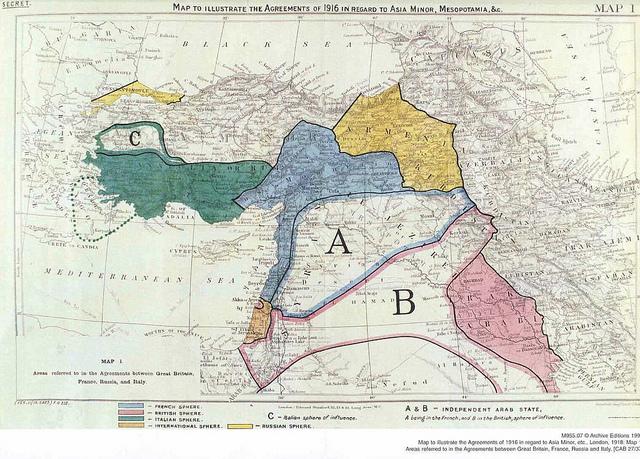
In their grab for influence and resources, colonial powers drew artificial borders across the Middle East and North Africa, often arbitrarily splitting traditional tribal territories into new states. Clans and families found themselves living in different countries. It was bearable at the beginning since no real physical barriers were erected, meaning that the nomad and semi-nomad tribes continued their routine movements and family contacts weren’t interrupted. Most states established patterns of dependence and inclusion with these tribal populations which included representation in state institutions, financial subsidies and assurances of non-interference in their jurisdiction and practices.
It wasn’t a perfect formula but it created a modus vivendi that served both the tribes and the regimes so long as the states could provide the means to keep the tribes loyal mainly through financial subsidies. The model worked for more than half a century from Algeria, through Tunisia, Libya, Egypt, Jordan, Syria and Iraq and the Horn of Africa. Little was invested in education, so tribal leaders were kept busy maintaining their tribal authority and prestige—prerequisites for survival in the unforgiving sands of Arabia and the Sahara desert.
This comfortable equilibrium started fraying at the edges towards the end of the 20th century when literacy improvements coincided with the rapid spread of cellular communications. Tribes in Egypt, Syria and Yemen began to feel disenfranchised by privatisation policies brought about by globalisation. The trend was accelerated by the 2011 upheavals naively dubbed ‘The Arab Spring’. Central authority was severely weakened in most places across the Middle East and North Africa, preventing authorities providing the tribes with the essentials, which were mainly economic, needed to maintain their loyalty.
These tectonic changes want hand in hand with the spread of social media. The practical disappearance of international borders in some places contributed to the meltdown. Remote tribal clans, spread across three or four countries in Northern Africa like the Tuareg in Algeria, Tunisia and Libya or the big Annazah, Rawallah, Shammar tribes in Syria, Saudi Arabia, Iraq and Jordan in Western Asia which had managed to stay in contact over decades, began communicating intensively through new media and taking advantage of the breakdown of the borders. Doing so helped them to spread ideas and to coordinate moves and policies. This happened also with the Bedouin tribes in the Sinai Peninsula, Southern Israel, the Gaza Strip, Jordan and Northern Saudi Arabia.
To complicate the situation, dangerous new elements in the shape of al-Qaeda and ISIS took advantage of the governance vacuum. These Jihadi-Salafi groups influenced some tribes through a combination of financial benefits and a show of cruel power which sometimes disrupted their organic and traditional structures. In other places (such as Syria), the tribes split between opposing the regime or supporting it. That new factor turns the traditional equation into a triangle: state, tribes and Jihadi-Salafism.
Here we come to the contemporary challenge: who’s going to find out what happens among those dispersed tribes and how are they going to do that? This isn’t an academic or social question but an intensely practical one. European, North American and Australian diplomats, armed forces and NGOs operate in those areas but most of their quarters are either closed or fortified by barbed wire and concrete protective walls, hindering efforts to discharge their classical duties. Baghdad’s ‘Green Zone’, home to most of the embassies, is an example of such disconnect, as is the phenomenon of trying to monitor the situation in Syria through the staff who have been withdrawn from Damascus and rehomed in Beirut.
Operational and political decisions have to be made and policies adopted now to help resolve situations created over a century ago. How much support, in equipment and finance, should be extended to tribes in return of fighting against ISIS or turning their back on their current “allies”? That’s a current and valid issue in Syria, Libya, Yemen and Iraq. Such complex decisions must be based on the best information available. How can one sense the mood of the tribes in Deir Al-Zour Province in Eastern Syria and Al-Anbar Province in Western Iraq who reside along the Euphrates River on whether joint regional self-rule will work in the future? How much support may the Ruwallah, Shammar and Annazah factions in different countries provide to their brethren in other countries? And how are Kurdish tribal groups in Iran, Iraq, Syria and Turkey planning for their common future at the same time as their nations of residence are using them as a proxy against their rivals?
The complicated picture on the ground gives rise to the question of who should monitor and research these cross-border issues. At the moment there exists no cohesive architecture or mechanism to carry out such activities. Such an oversight obscures our vision of what is happening in the Middle East and North Africa, where the sands keep shifting.